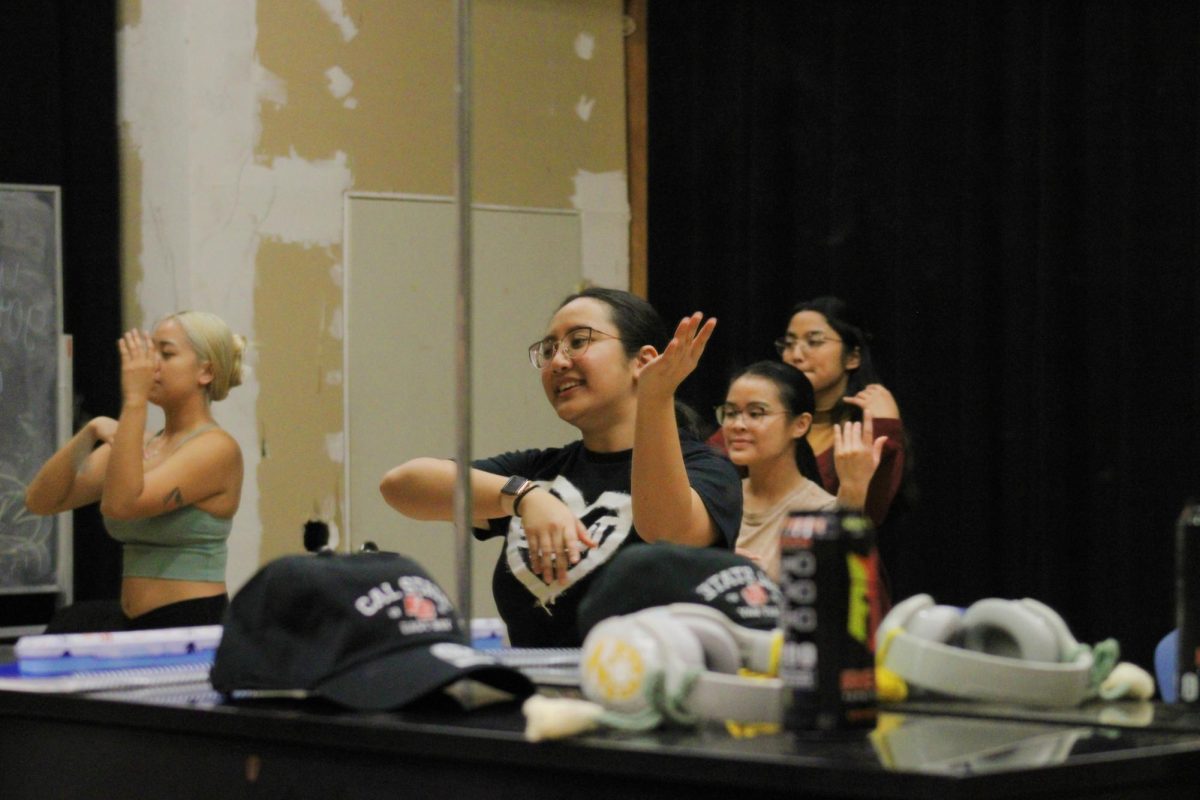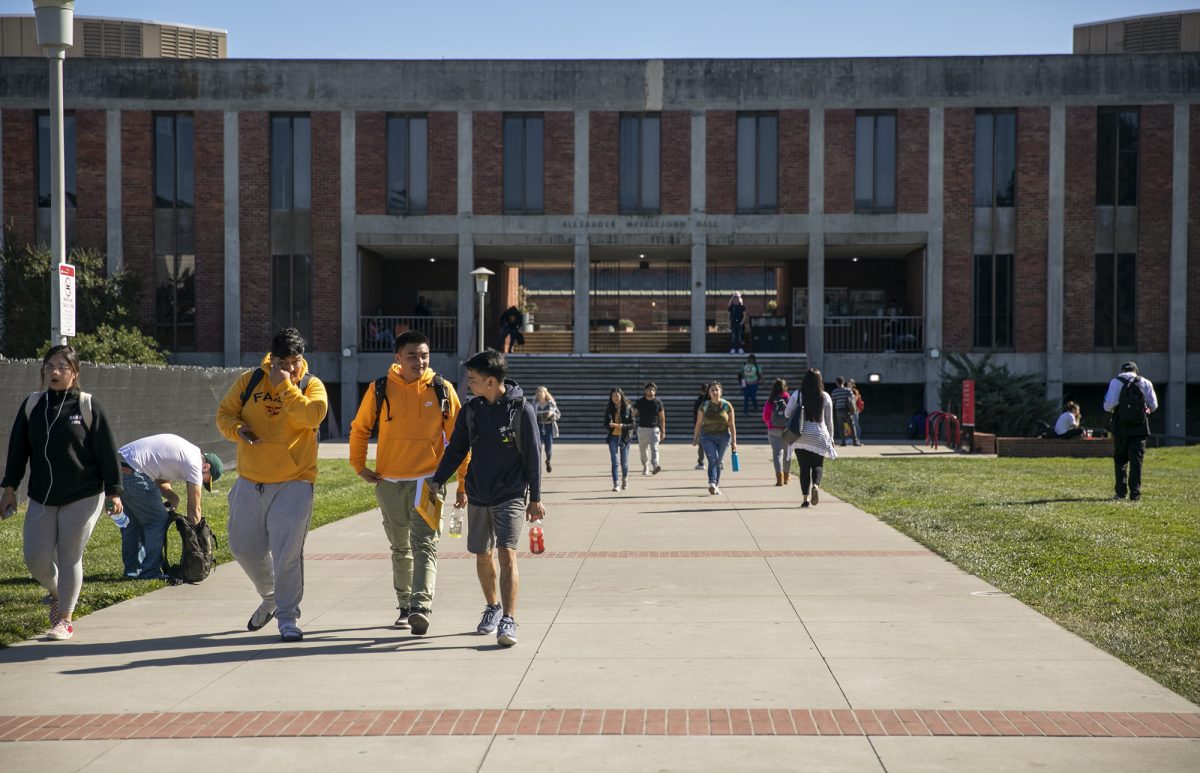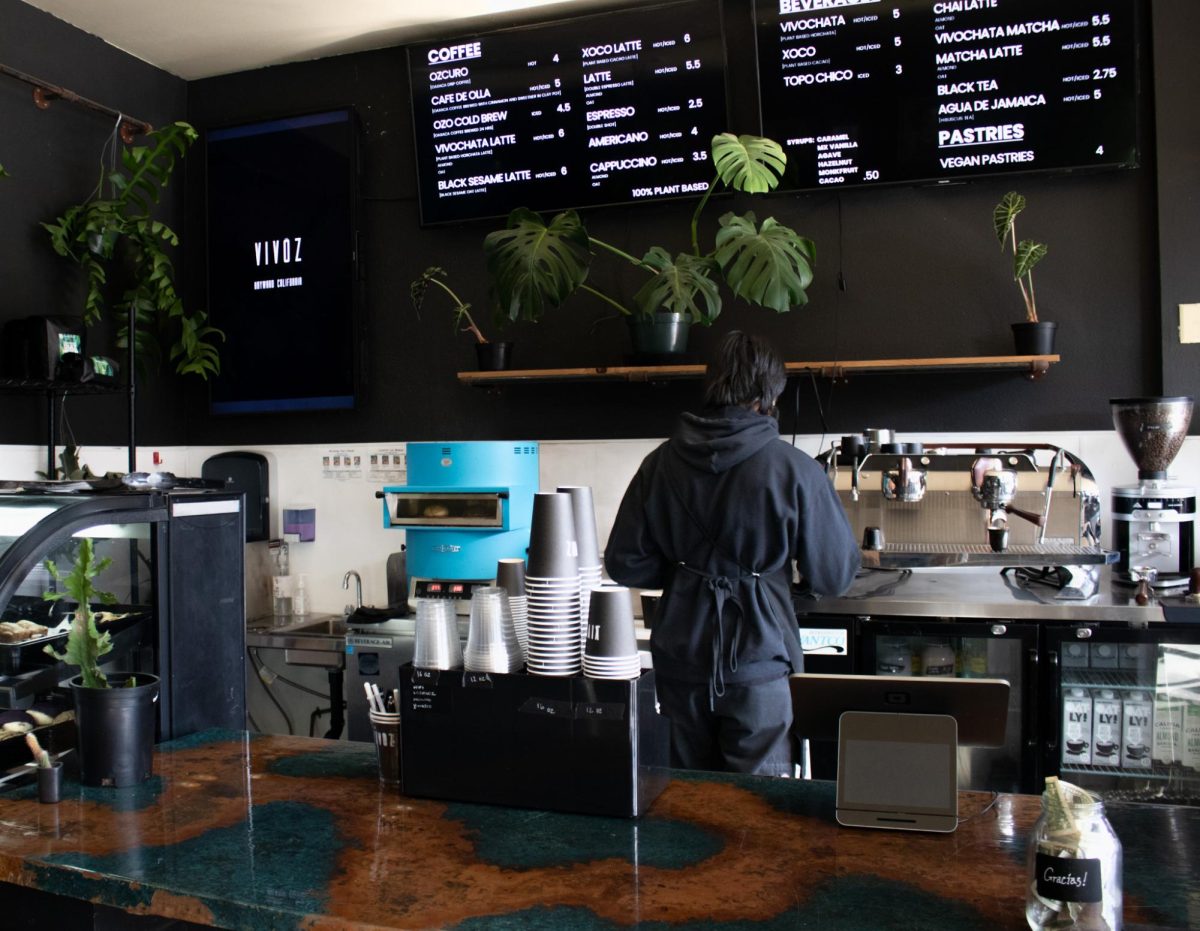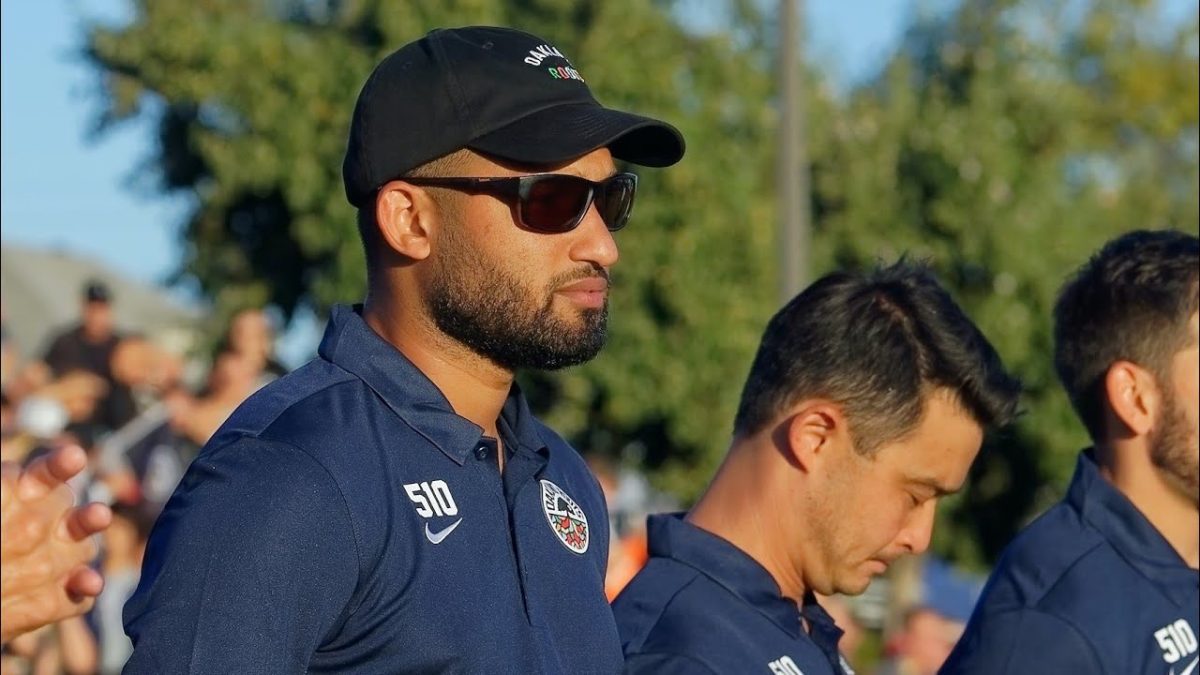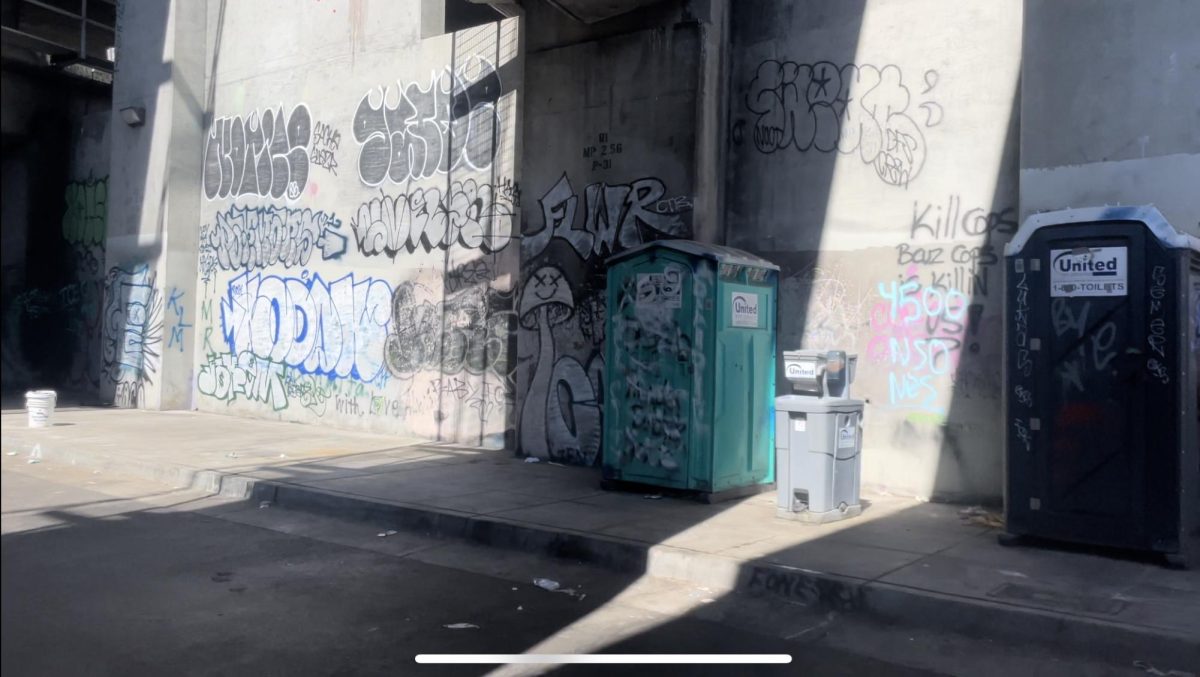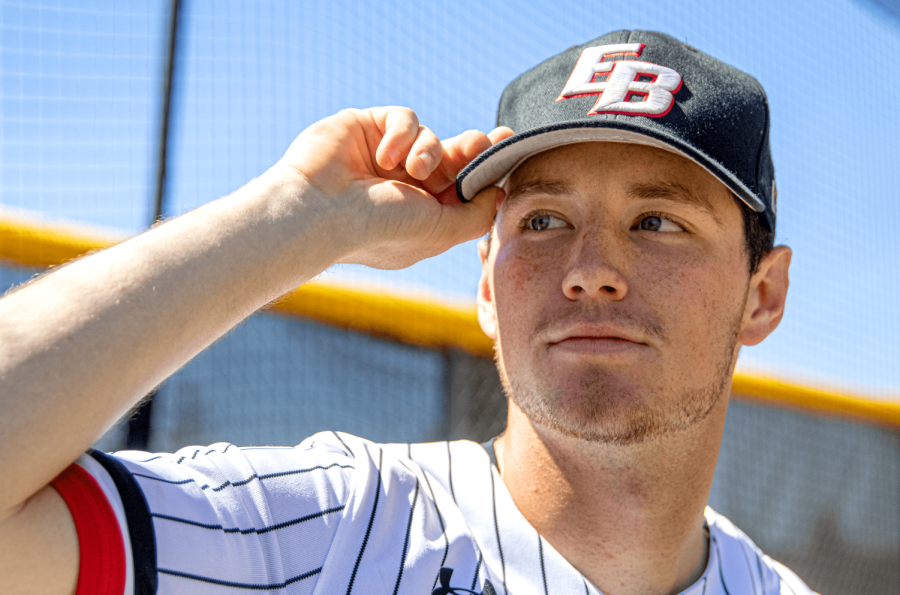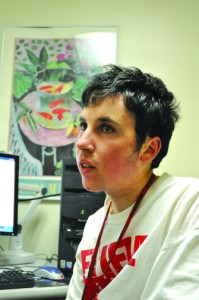
William Bernick is a 20-year-old student who works in the University Union, is a member of Circle K, and earns good grades within his major.
If it wasn’t for his sometimes unkempt appearance and tendency to talk to himself, he would be just like any other student on the CSU East Bay campus.
Bernick is one of 21 students on the campus that have registered with Accessibility Services as having an autism spectrum disorder (ASD).
“I feel good about going to school…I get to have the same experience as everyone else,” said Bernick.
It is estimated that an average of 1 in 110 children in the United States have an ASD, which can range from low functioning to high functioning, according to the Center for Disease Control and Prevention. Their levels of intelligence also greatly vary, and many find themselves fully capable of, and enjoying, attending higher education institutions.
Since 2000, the number of college age students with ASDs in Alameda County has increased from 19 to 164, according to the California Department of Education. While inclusionary programs have helped these students integrate into higher education, their professors and peers still have many misconceptions about them.
“Some individuals have heightened sensitivity to lights, touch, smells, or sounds, and may avoid certain environments or activities,” said Katie Brown, the interim director of Accessibility Services at CSUEB.
“Some individuals with ASD interpret information quite literally, rather than figuratively, and respond in kind. Some have difficulty with social interactions and may not initiate conversations or develop friendships easily. These characteristics can sometimes lead others to misinterpret certain behaviors.”
Building Social Networks
Students with autism or disorders along its spectrum can often be at odds with the college environment, especially the ubiquitous social atmosphere. According to Dawn Prince-Hughs, a professor of anthropology at Western Washington University who has Asperger Syndrome, an autism spectrum disorder, many students with ASD disregard personal appearance and sometimes hygiene, speak plainly without censorship, have rituals, or are attached to personal items for comfort, all of which may be off-putting to other students and faculty.
Kern Wallace, an English major with Asperger Syndrome and Attention Deficit Hyperactivity Disorder (ADHD), says that he has trouble paying attention, interacting socially, verbalizing his thoughts and fidgeting.
“We tend to have the same interests as everyone else,” said Wallace. “I just really want to connect with other people, but it’s hard because I just have trouble with the nuances of social interactions and I also tend to be shy.”
A common misconception about students with ASD is that they do not seek out guidance or information about social interaction or that they are unable to interact.
“Social issues are an important part of the college experience for typical and autistic students,” said Patricia Robinson, a licensed family and marriage therapist who operates out of San Ramon.
“Often for ASD students, there’s a relief from being away from the cliques and bullying of high school, but a feeling of isolation can pervade as well. Colleges, especially those with a high proportion of off-campus students, can be lonely environments where individuals barely get to interact. Students on the autism spectrum often make friends more easily in more structured settings, like clubs or special interest activities.”
This structure is what helped Bernick connect with other students. By becoming a member of the community-service-oriented Circle K, and the Christian organization Koinonia, Bernick was able to fulfill his need for social interaction.
“There’s a huge unmet need for local support organizations,” said Robinson. “If colleges and universities teamed with support organizations like GRASP [the Global and Regional Asperger Syndrome Partnership]…many students would be a lot less isolated and able to get the specific help they need to have the best college experience.”
Living in dorms can also present a challenge to college students with ASD, said Robinson.
“Sensory issues may be challenging, such as too much noise or harsh lighting, and roommates may not be aware of the sensory challenges of ASD students,” Robinson said.
Bernick, who lives on campus, said his roommates are understanding of his needs.
“I am glad to live on campus and I like it here,” said Bernick. “I can live just fine here despite my disability… I have my own apartment. It’s much easier to live away from home because I have my own living environment. I feel more independent. I have more space and freedom.”
Proper Instruction
For CSUEB professors who want to learn more about how to instruct students with ASDs, Accessibilities Services is currently developing an online training and information module about disabilities, rights, responsibilities and procedures.
In the meantime, “any student, faculty, or staff on campus can request a presentation from our office about how to support students with ASD,” said Brown.
Often, students with autism have trouble filtering background noise and find it extremely difficult to take notes and listen to lectures simultaneously.
“The best advice for a professor is to try to be patient, and try to learn what works for the student,” said Wallace. “For me, I like hands-on learning and reading out of a textbook. I hate taking notes because I’m really bad at it.”
In her book, “Aquamarine Blue 5: Personal Stories of College Students with Autism,” Prince-Hughs suggests faculty members “insist on quiet during lectures and provide handouts with notes on the lecture.” Students with ASD may also be perturbed by overwhelming odors, so keeping smells to a minimum is suggested.
Clarity of assignments, lectures and exams is also critical for students with ASDs.
In her work with students in the East Bay, Robinson says that what professors can do for students with ASD is to allow for a depth of focus, breaking down large tasks and being meticulous with scheduling.
“Providing lots of visual and written materials can make the difference between success and failure,” said Robinson.
“Just say what you mean, and be very clear,” said Wallace. “And use specific terms, because it’s really hard for me to understand when you try to say something without saying it outright. Try to be direct, and clear.”
ASD students may also need to be alone during exams. Exams should be unambiguous, even with repeated instructions. If a sample quiz is given, its organization should mirror the exam to follow, wrote Prince-Hughs.
“Sometimes taking a test in a quiet room away from distractions can decrease anxiety and allow for better performance on tests,” said Bill Shryer, the clinical director of Diablo Behavioral Healthcare in Danville, who has worked with several students from CSUEB with ASDs. “Often, just checking in with the student to ask directly if they have any questions or areas that are confusing can go a long way.”
One of the largest challenges autistic students face in the classroom is irritating classmates or teachers with atypical facial expressions and tic behaviors, such as rocking, coughing, and making noise, much of which they may be unaware of.
“Their facial expression can at times be a turn-off, as often, they don’t really express emotion like others may,” said Shryer. “Their expression can be misinterpreted as angry, or something else that doesn’t seem to fit the current circumstance. Some may show odd body mannerisms at times, especially under periods of stress or anxiety.”
Tic behaviors calm down students with ASD and allow them to focus. It might prove useful to have a professor explain to the class that this is what the student must do for him or her to focus, suggests Prince-Hughs.
“…If the behaviors are disruptive to the class, then the instructor must address a student’s conduct immediately and ask the student to stop the behavior or leave the classroom, just as one would if a student without ASD was behaving inappropriately in class,” said Brown.
Services at CSUEB
Students with ASDs that register with Accessibility Services can receive accommodations under the American Disabilities Act law, such as extra time on tests, use of assistive technology, or having a note taker.
“In addition, some students with disabilities including ASD may be referred to programs such as EXCEL or Project IMPACT,” said Brown. “These programs provide non-mandated support services that are funded through federal grant money, and include services such as tutoring, academic advising, assistive technology training, and wellness counseling.”
Accessibility Services is also piloting a College Link Program that will “coach” students with ASDs on how to better plan for studying and exams, and to help them set goals for large assignments.





